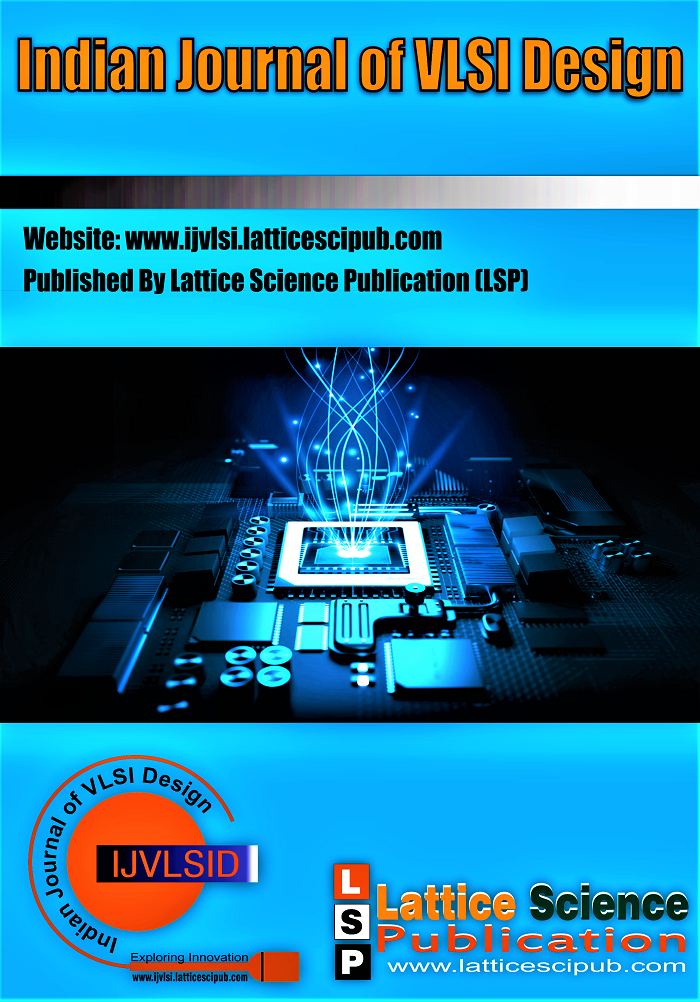Utilization of Arduino Control in Mitigating the Hybrid Harmonics of DC/AC Inverter
Main Article Content
Abstract
This Paper deals with the implementation of Harmonics distortion in distribution system by using the method of hybrid of active filter and passive filters. The active filter is used to reduce the distortion present in the output. Boost converter is used to increase the voltage level. This boost converter is connected to the inverter, which is designed by using the MOSFET as a switch. In practical application the pulses for the inverter is given by using the Arduino control. By using this hybrid method, the total harmonics distortion is reduced to below the acceptable limit. Simulation for this proposed method is done by using the MATLAB simulink. Initially, fast fourier transform may found to mitigate harmonics. But emerging technologies like Arduino control is proved to simple and economical in carrying out the same task effectively.
Downloads
Article Details

This work is licensed under a Creative Commons Attribution-NonCommercial-NoDerivatives 4.0 International License.
How to Cite
References
Ioannis D. Bouloumpasis, Panagis N. Vovos, Konstantinos G. Georgakas, Nicholas A. Vovos, “Harmonic Cancellation of PV-supplied DC/AC Converter without Stabilizing Input Capacitors,” Elsevier, IFAC-PapersOnLine49-27,2016, pp. 035–040. [CrossRef]
Ali HazdianVarjini, “Harmonic control techniques for inverters and adaptive active power filters,” University of Wollongong, Research online, 1998.
Donald Grahame Holmes, Brendan P. McGrath, “Opportunities for Harmonic Cancellation with Carrier-Based PWM for Two-Level and Multilevel Cascaded Inverters,” IEEE Transactions on Industry Applications, Vol. 37, No. 2, 2001, pp. 574-582. [CrossRef]
Qing Zhong, Junjie Feng, Gang Wang, Haifeng Li, “Feedforward Harmonic Mitigation Strategy for Single-Phase Voltage Source Converter,” Journal of Electrical and Computer Engineering,2018, pp.1-10. [CrossRef]
Ioannis D. Bouloumpasis, Panagis N. Vovos, Konstantinos G. Georgakas, Nicholas A. Vovos, “Current Harmonics Compensation in Microgrids Exploiting the Power Electronics Interfaces of Renewable Energy Sources,” Energies, Vol. 8, 2015, pp. 2295-2311. [CrossRef]
Ali Abbas, Tahir Izhar, Umar Tabrez Shami, Adil Salman, Hanya Amjad, “Synthesis of Low Cost Inverter Using Harmonic Reduction through Pulse Pattern,” International Journal of Scientific & Engineering Research, Vol. 7, No. 10, 2016, pp. 798-803.
Matthew Armstrong, David J. Atkinson, C. Mark Johnson,Tusitha D. Abeyasekera, “Low Order Harmonic Cancellation in a Grid Connected Multiple Inverter System Via Current Control Parameter Randomization,” IEEE Transactions on Power Electronics, Vol. 20 (4), 2005, pp. 885-892. [CrossRef]
Lu, Junwei, Zhao, Xiaojun, Li, Hui, “Harmonic Analysis in Microgrid and Distributed Energy System Using Harmonic Balance Method,” IEEE PES Asia-Pacific Power and Energy Engineering Conference, 2016, pp. 1-5. [CrossRef]
Dibyendu Bhadra, Rajnish Kumar Meena, “Power Quality Improvement By Harmonic Reduction Using Three Phase Shunt Active Power Filter With p-q & d-q Current Control Strategy,” Thesis, National Institute of Technology, Rourkela, 2015.





